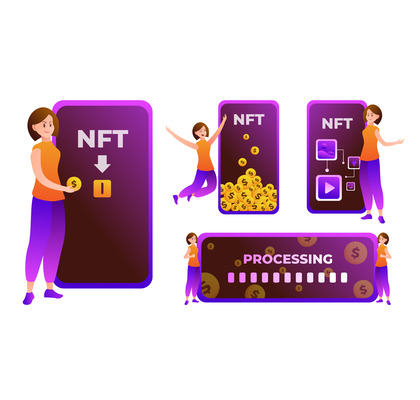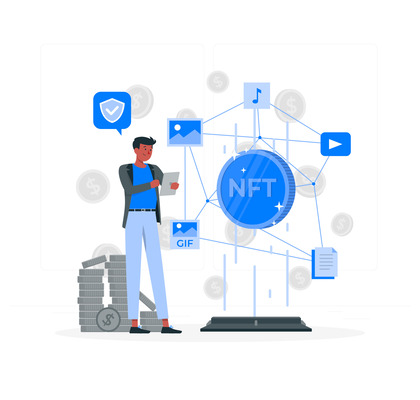In today’s fast-paced digital era, data is being generated at an unprecedented rate. Every click, purchase, and interaction contribute to a massive pool of raw data. However, the true value lies in extracting meaningful insights from this data. This is the juncture where data science takes pivotal role. With its advanced techniques and tools, data science is revolutionizing industries across the globe. Let us delve deeper into the world of data science and understand how it is transforming industries.
Introduction
Raw data, often unstructured and vast in volume, is essentially a collection of facts or observations. It lacks intrinsic value until it is processed and analysed. Data science acts as the bridge between raw data and valuable insights. It encompasses a multidisciplinary approach that combines statistics, mathematics, programming, and domain expertise to extract meaningful patterns, trends, and correlations from data.
Understanding Raw Data
Raw data can be in various forms, such as numerical, textual, or multimedia. It can come from diverse sources, including customer transactions, social media posts, sensors, or medical records. However, in its raw state, data is typically unorganized and lacks structure. It requires pre-processing and cleansing before analysis. Once transformed into a structured format, it becomes easier to gain insights and make informed decisions.
The Role of Data Science
Data science serves as an interdisciplinary domain that harnesses scientific methodologies, intricate algorithms, systematic procedures, and advanced systems to unearth wisdom and revelations from both organized and unorganized data sources. Its primary purpose is to uncover hidden patterns, identify trends, and predict future outcomes. By leveraging data science techniques, organizations can gain a competitive edge, optimize operations, and drive innovation.
-
Data Science Techniques and Tools
Data science encompasses a wide range of techniques and tools, including statistical analysis, machine learning, data mining, data visualization, and predictive modeling. These techniques enable data scientists to analyze large datasets, identify patterns, build models, and make accurate predictions. Popular programming languages like Python and R, along with frameworks like TensorFlow and PyTorch, are widely used in the data science ecosystem.
Applications of Data Science in Industries
Data science has found applications in various industries, transforming the way they operate and make strategic decisions. Let’s explore some of the key sectors where data science is making a significant impact.
In the healthcare industry, data science plays a crucial role in disease prediction, drug discovery, and personalized medicine. By analyzing patient data and medical records, data scientists can identify risk factors, develop treatment plans, and optimize healthcare delivery. Machine learning algorithms can help diagnose diseases, predict patient outcomes, and improve overall healthcare outcomes.
Data science has revolutionized the retail industry by enabling personalized marketing, demand forecasting, and inventory optimization. Through customer segmentation and behavior analysis, retailers can offer tailored recommendations and promotions. Predictive analytics helps anticipate demand patterns, optimize pricing strategies, and ensure efficient inventory management.
In the finance sector, data science has transformed risk management, fraud detection, and investment strategies. By analyzing market trends, financial data, and customer behavior, data scientists can identify potential risks, detect fraudulent activities, and create sophisticated trading algorithms. This enhances decision-making, minimizes losses, and maximizes returns.
Data science is driving innovation in manufacturing through process optimization, predictive maintenance, and quality control. By analyzing sensor data and production metrics, manufacturers can identify bottlenecks, optimize production schedules, and predict equipment failures. This progression results in heightened effectiveness, diminished operational interruptions, and elevated calibre of the end product.
-
Marketing and Advertising
In the digital marketing realm, data science empowers businesses to target the right audience, optimize ad campaigns, and measure marketing effectiveness. By analysing customer data, web analytics, and social media trends, marketers can create personalized experiences, allocate marketing budgets effectively, and track campaign performance in real-time.
Data scientists are storytellers for the digital age, unlocking the secrets hidden within the numbers.
– DJ Patil
Data Science Process
To extract insights from raw data, data scientists follow a systematic approach known as the data science process. It involves several stages, each contributing to the overall goal of gaining valuable insights. The customary progression of data science encompasses the subsequent stages:
-
Data Collection and Preparation
This stage involves gathering relevant data from various sources and transforming it into a structured format suitable for analysis. Data cleaning, data integration, and data pre-processing techniques are applied to ensure the data’s quality and reliability.
-
Data Exploration and Analysis
In this phase, data scientists explore the dataset, visualize it, and identify patterns and correlations. Statistical techniques, data visualization tools, and exploratory data analysis methods help in understanding the data and uncovering meaningful insights.
-
Model Building and Evaluation
Based on the analysis, data scientists develop models using machine learning algorithms, statistical models, or predictive models. These models are trained on historical data and evaluated using appropriate metrics to assess their performance and accuracy.
-
Deployment and Monitoring
Once a model is built and validated, it can be deployed into production environments. Continuous monitoring and evaluation ensure that the model remains effective and accurate over time. This stage also involves updating models as new data becomes available.
Benefits of Data Science in Industries
The adoption of data science brings several benefits to industries. Allow us to delve into a few noteworthy benefits worth examining:
Data science provides valuable insights that support data-driven decision-making. By analysing historical and real-time data, businesses can make informed choices, identify opportunities, and mitigate risks.
-
Improved Operational Efficiency
Data science helps optimize operations by identifying inefficiencies, automating processes, and reducing costs. By analysing data, organizations can streamline workflows, improve resource allocation, and enhance overall efficiency.
-
Personalized Customer Experiences
By leveraging data science, businesses can deliver personalized experiences to their customers. By understanding customer preferences and behaviour, companies can tailor their products, services, and marketing strategies to individual needs, leading to higher customer satisfaction and loyalty.
Data science enables predictive maintenance, which helps organizations detect equipment failures before they occur. By analysing sensor data and historical maintenance records, businesses can identify patterns and signals that indicate potential breakdowns. This allows proactive maintenance, reduces downtime, and improves equipment reliability.
-
Fraud Detection and Risk Mitigation
In industries like finance and insurance, data science plays a vital role in fraud detection and risk mitigation. Advanced analytics and machine learning algorithms can identify fraudulent patterns, anomalies, and suspicious activities, helping organizations prevent financial losses and protect their assets.
Challenges in Implementing Data Science
While data science offers immense potential, there are several challenges organizations face when implementing data science initiatives. Let’s discuss some of these challenges:
-
Data Quality and Privacy Concerns
Data quality and privacy issues pose significant challenges in data science projects. Poor data quality, incomplete or inaccurate data, and privacy regulations can hinder the effectiveness of data analysis and compromise the outcomes.
-
Skill Gap and Talent Acquisition
The demand for skilled data scientists and analysts exceeds the available talent pool. Organizations often struggle to find professionals with the necessary expertise in data science, machine learning, and programming.
-
Infrastructure and Resource Requirements
Data science projects require robust infrastructure and computational resources to handle large datasets and run complex algorithms. Organizations need to invest in appropriate hardware, software, and cloud computing solutions to support their data science initiatives.
-
Future Trends in Data Science
The realm of data science is in constant flux, witnessing swift advancements, as numerous emerging patterns mould its trajectory ahead. Let us explore some of the key trends:
-
Artificial Intelligence and Machine Learning
The integration of artificial intelligence (AI) and machine learning (ML) techniques will continue to advance data science. AI-powered algorithms can analyse vast amounts of data, learn from patterns, and make accurate predictions, driving innovation across industries.
-
Internet of Things (IoT) and Big Data
The proliferation of IoT devices and the exponential growth of big data will create new opportunities for data science. The ability to analyse and derive insights from the massive volume of IoT-generated data will lead to enhanced decision-making, improved efficiency, and innovative solutions.
-
Automation and Augmented Analytics
Automation will play a significant role in data science processes. Automated data collection, pre-processing, and model selection will streamline workflows and make data analysis more efficient. Augmented analytics, which combines machine learning and natural language processing, will enable easier data exploration and insights generation for non-technical users.
Conclusion
Data science has emerged as a powerful force, transforming industries by unlocking valuable insights from raw data. From healthcare to finance, manufacturing to marketing, data science is revolutionizing decision-making, improving efficiency, and driving innovation. While challenges exist, the benefits of embracing data science are undeniable. As the field continues to evolve, organizations that harness the power of data science will gain a competitive advantage in this data-driven world.









































 Imagine a world where you can travel to exotic destinations, explore fantastical realms, or interact with virtual beings—all without leaving the comfort of your living room. Welcome to the captivating realm of virtual reality (VR). In this blog post, we will delve into the fascinating world of VR, exploring its applications, advancements, and the transformative impact it has on various industries and our daily lives.
Imagine a world where you can travel to exotic destinations, explore fantastical realms, or interact with virtual beings—all without leaving the comfort of your living room. Welcome to the captivating realm of virtual reality (VR). In this blog post, we will delve into the fascinating world of VR, exploring its applications, advancements, and the transformative impact it has on various industries and our daily lives.


 Virtual reality has also made a significant impact on education and training. VR simulations provide immersive and realistic environments for learning and skill development. Students can explore historical landmarks, dive into the depths of the ocean, or practice complex medical procedures—all within a virtual space. VR training programs have been adopted in fields such as aviation, healthcare, and military, allowing individuals to gain hands-on experience in a safe and controlled environment.
Virtual reality has also made a significant impact on education and training. VR simulations provide immersive and realistic environments for learning and skill development. Students can explore historical landmarks, dive into the depths of the ocean, or practice complex medical procedures—all within a virtual space. VR training programs have been adopted in fields such as aviation, healthcare, and military, allowing individuals to gain hands-on experience in a safe and controlled environment.

